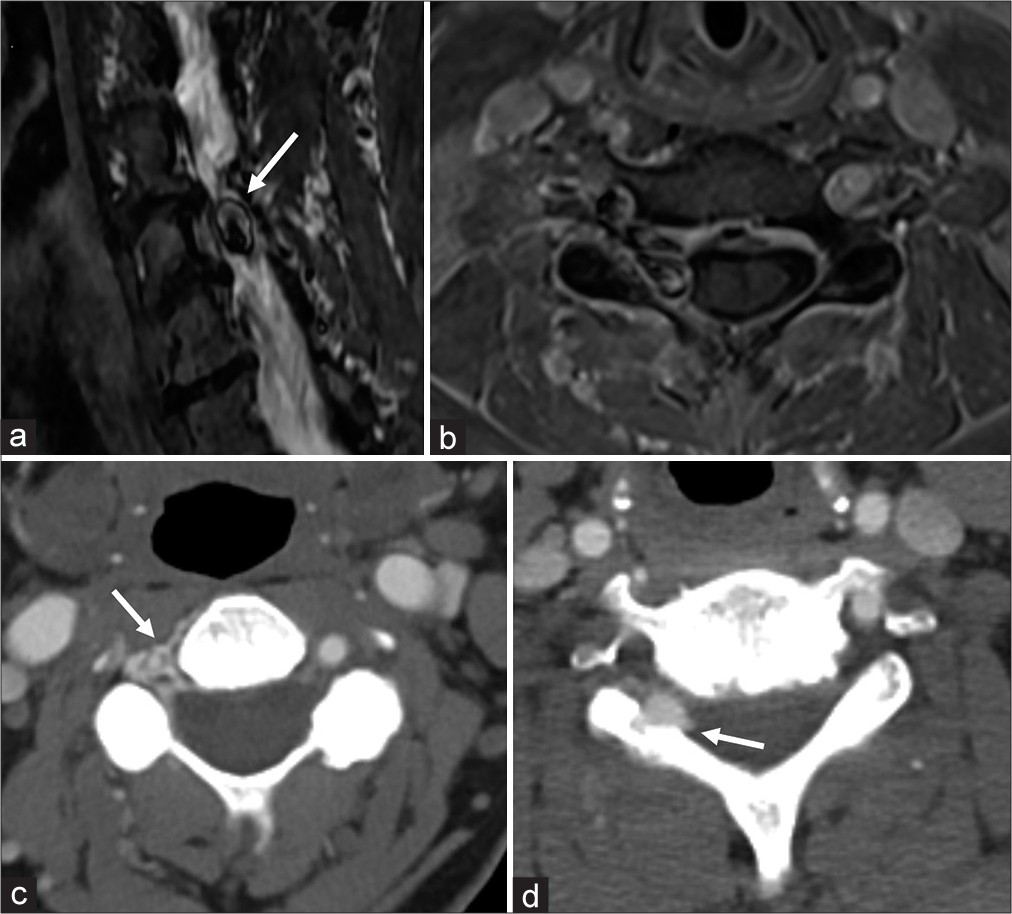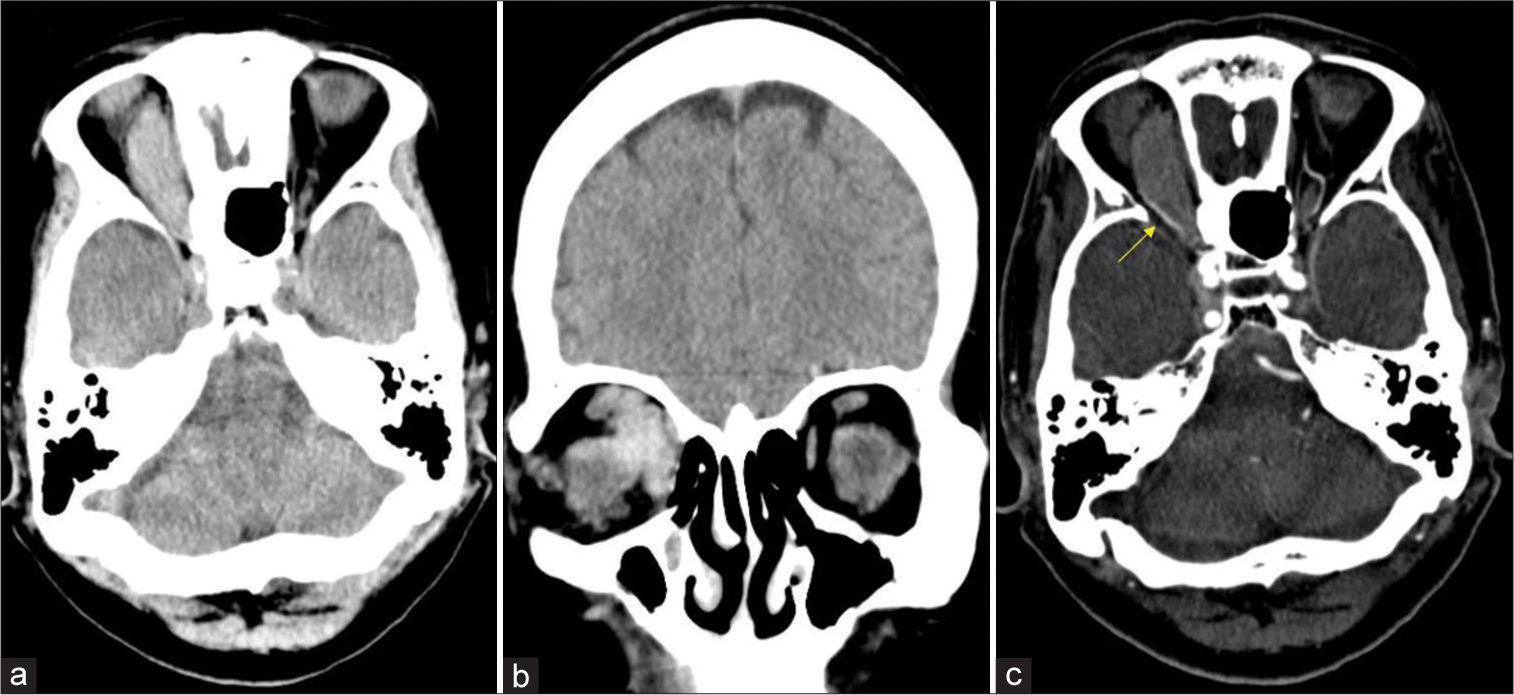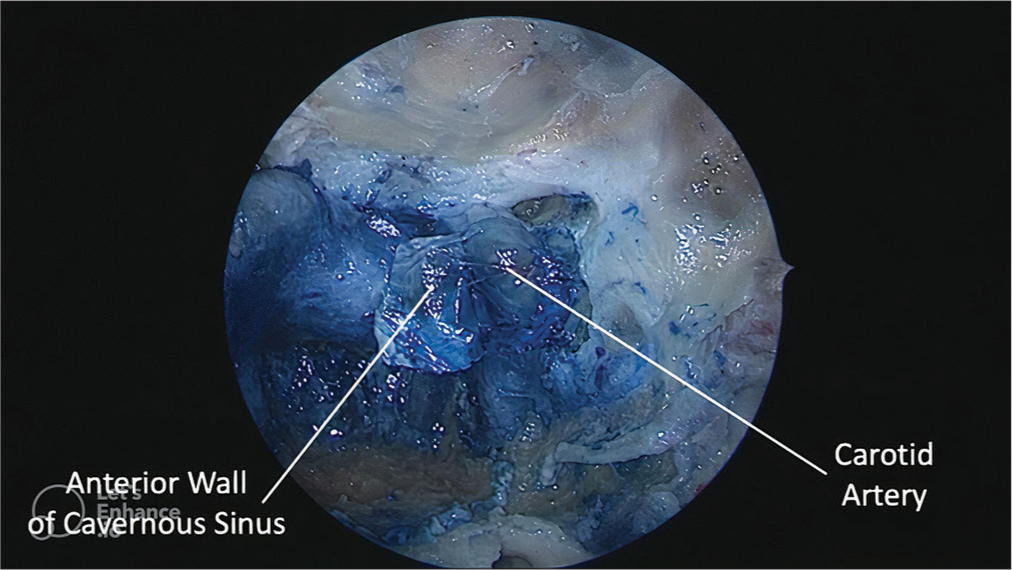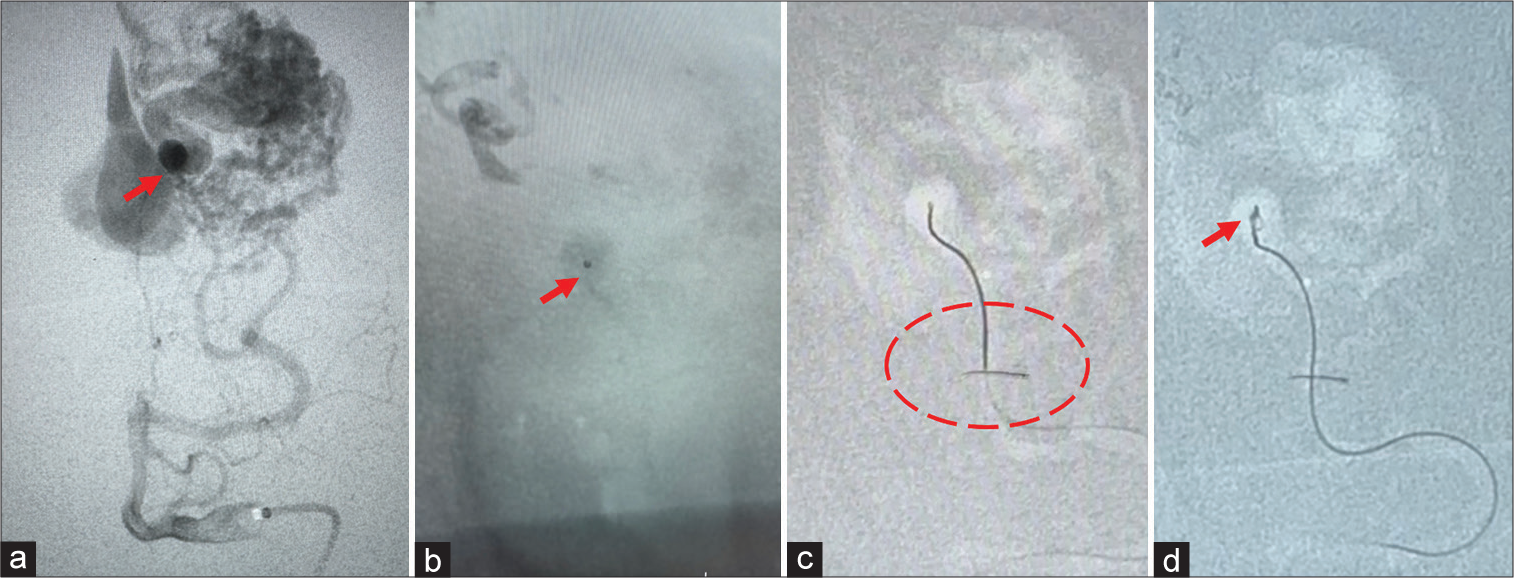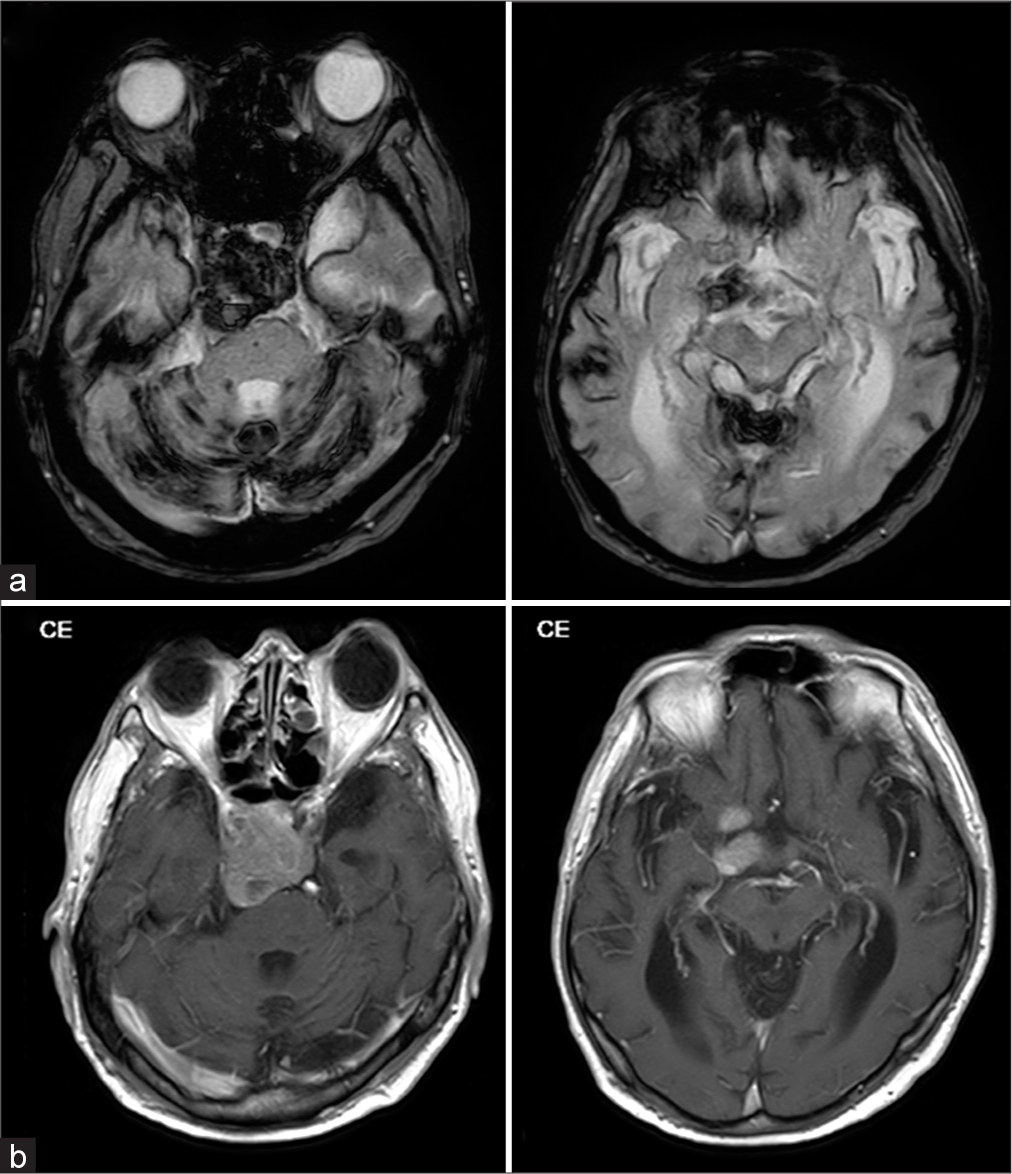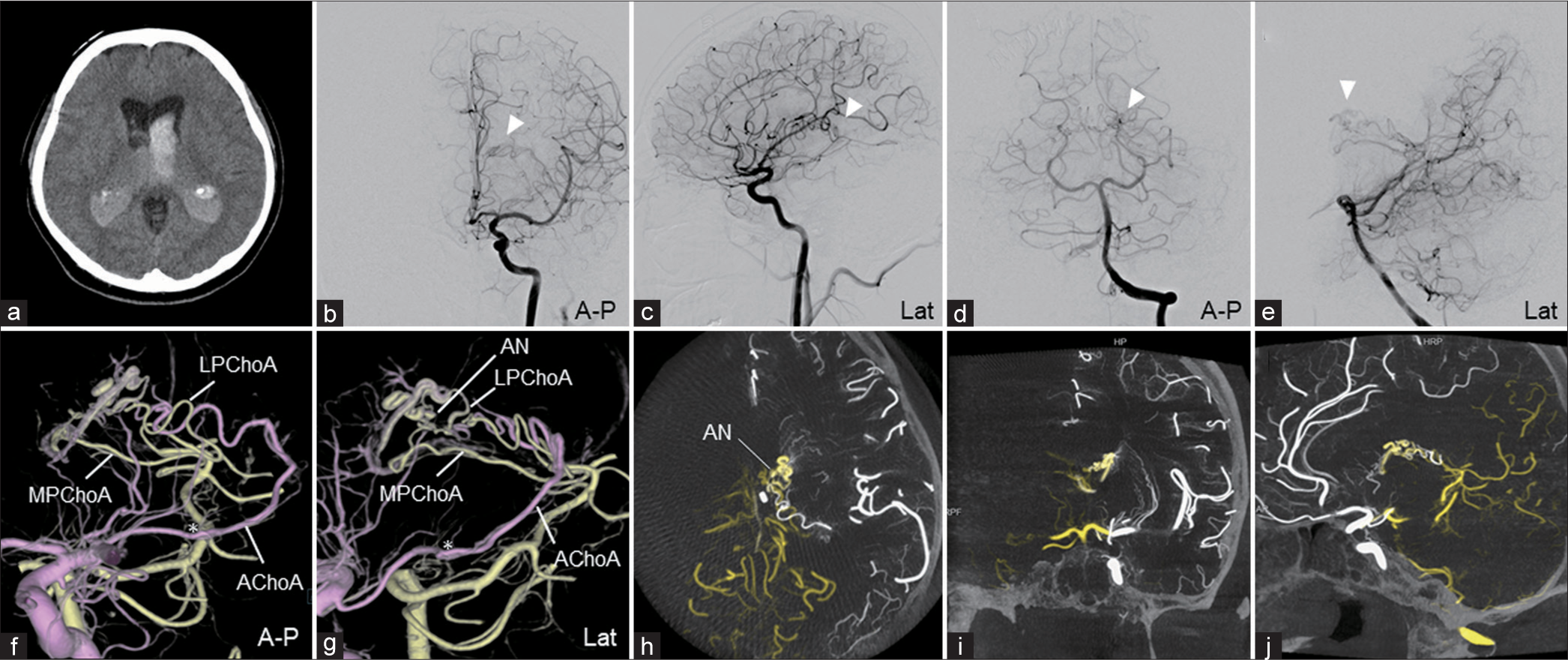Cervical extradural arteriovenous fistula with radiculopathy managed endovascularly
Date of publication: 28-Jul-2023
Background: Extradural arteriovenous fistulas (AVFs) of the cervical spine are extremely rare, and typically manifest as slowly progressive myelopathy caused by mass effect. This is a unique case of extradural AVF of the cervical spine manifesting with purely radicular symptoms and treated endovascularly with coil and liquid embolization.
A case of intraorbital malignant lymphoma biopsied using an endoscopic transnasal approach
Date of publication: 21-Jul-2023
Background: While most orbital tumors are primary, some are secondary, including extension or invasion from adjacent sites. The diagnosis varies widely, and the treatment strategy depends on the pathological diagnosis. Transcranial and transorbital surgical approaches are typically used. Recently, a transnasal endoscopic approach has emerged as a viable option. We report a case of an intraorbital tumor treated with endoscopic transnasal biopsy and compare the results with those of other surgical approaches.
Defining the limits of the anterior wall of the cavernous sinus through an endoscopic view: Cadaveric anatomical study
Date of publication: 21-Jul-2023
Background: The anterior wall of the cavernous sinus (CS) represents an important landmark for endoscopic surgery that although mentioned before, no precise anatomical boundaries have been described. We describe the anatomical landmarks that delimit the anterior wall of the CS, emphasizing its importance as a reference for accessing the CS through endoscopic approaches.
A simple but effective solution for proximal mark absence on some microcatheters in intracranial aneurysm embolization: Technical note
Date of publication: 21-Jul-2023
Background: Endovascular coil embolization is increasingly being used for the treatment of intracranial aneurysms and other pathologies such as arteriovenous (AV) malformations and AV fistulas. Appropriate embolization technique requires a microcatheter with two radiopaque marks, one proximal and one distal. We present an alternative coils deployment technique for intracranial aneurysms, using a microcatheter without a proximal radiopaque mark.
Postoperative vasospasm and cerebral infarction in a patient with large pituitary adenoma and cerebral superficial siderosis
Date of publication: 21-Jul-2023
Background: Cerebral vasospasm and infarction are rare complications of transsphenoidal surgery for pituitary adenoma. Cerebral superficial siderosis may result from subarachnoid hemorrhage from a pituitary adenoma. The constellation of cerebral superficial siderosis, cerebral vasospasm, and pituitary adenoma is rare. We describe an extremely rare clinical constellation of immediately postoperative cerebral vasospasm and consequent cerebral infarction in a case with a large pituitary adenoma and cerebral superficial siderosis.
Preoperative tractography algorithm for safe resection of tumors located in the descending motor pathways zone
Date of publication: 21-Jul-2023
Background: Diffusion tensor imaging (DTI) tractography facilitates maximal safe resection and optimizes planning to avoid injury during subcortical dissection along descending motor pathways (DMPs). We provide an affordable, safe, and timely algorithm for preoperative DTI motor reconstruction for gliomas adjacent to DMPs.
Successful embolization of ventricular arteriovenous malformation supplied by the choroidal artery: A case report and literature review
Date of publication: 21-Jul-2023
Background: Ventricular arteriovenous malformations (AVMs) are localized in the ventricles and are mainly fed by the anterior choroidal artery (AChoA) and posterior choroidal artery (PChoA). Surgical resection of ventricular AVMs is difficult as the lesions are localized deep in the brain. Therefore, endovascular treatment is expected to treat ventricular AVMs. However, embolization from the AChoA and PChoA carries the risk of ischemic complications. Even though there are some major reports on embolization strategies from the choroidal arteries, embolization of these arteries remains technically challenging. In this article, we report two successful cases of ventricular AVM embolization using AChoA and PChoA.
Societal challenges facing neurosurgeons in low- and middle-income countries: Iraq as an example
Date of publication: 21-Jul-2023
Solitary metastasis to the skull as the first sign of hepatocellular carcinoma in a patient in long-term remission
Date of publication: 21-Jul-2023
Background: Hepatocellular carcinoma (HCC) is a common malignant tumor with a 5-year survival rate of 10%, presenting with extrahepatic metastases in 15–17% of patients. HCC-bone metastases represent approximately one-quarter of all HCC metastases, most frequently in the spine, pelvis, ribs, or femur. HCC-skull metastases, however, make up 0.4–1.6% of all HCC- bone metastases. Furthermore, solitary HCC-skull metastasis without known active primary HCC is an unusual presentation warranting further review and consideration.
Clinical outcomes and prognostic factors of traumatic basal ganglia hematomas: A 4-year single-center study
Date of publication: 21-Jul-2023
Background: Traumatic basal ganglia hematomas (TBGH) are rare entities. They are situated in the deep cerebral parenchyma and have also been termed as intermediate coup contusions. Available literature is sparse with regards to the characteristics and prognosis of TBGH. We aim to share our experience in the management, outcomes, and prognostic factors of TBGH.


